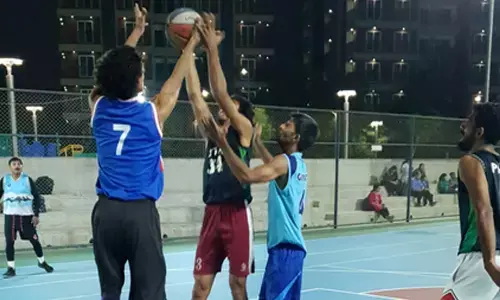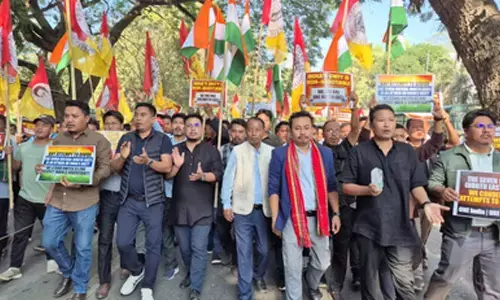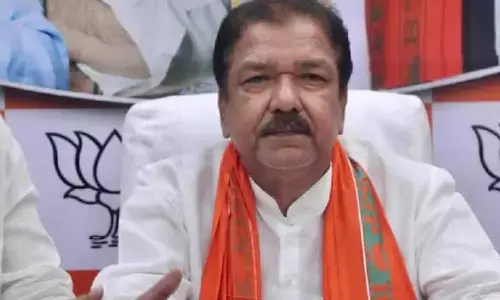Diplomat diaries: Nuggets of wisdom

Jawaharlal Nehru laid the foundation of foreign policy long before independence. His vision of world affairs was enriched by experiences of peers and contemporaries like Mahatma Gandhi and Rabindranath Tagore. Indeed, a significant part of the freedom movement was conceived by those who had travelled or stayed abroad.
Jawaharlal Nehru laid the foundation of foreign policy long before independence. His vision of world affairs was enriched by experiences of peers and contemporaries like Mahatma Gandhi and Rabindranath Tagore. Indeed, a significant part of the freedom movement was conceived by those who had travelled or stayed abroad.
Once they retire, there is nothing official about it. But insights matter. It can safely be said that practically all Foreign Secretaries have recorded their experiences, through well-researched books and memoirs
His own Foreign Minister, Nehru encouraged politicians, officials, businessmen and members of princely families to become ambassadors and articulate India’s worldview in support of former colonies emerging as independent nations and staying away from the power blocs that had come to dominate world affairs, post World War II.
For good or for bad, denigrated these days for reasons more political than diplomatic, Nehru’s remains the basic foreign policy. Continuity is its essence, but flexibility is equally essential, as is done since the Cold War era ended, to suit changing dynamics in world affairs.
Before the world got globalised and foreign travel became easy and widespread, Indian flag was flown by its diplomats. Never easy, the task has become more challenging with economic relations driving diplomacy in a world confronted by security woes.
India’s interaction with the world, when seen through the eyes of these diplomats, serving or retired, makes an interesting reading. They have stories to tell, experiences to share, of people they interacted with, perceptions they developed or missed, decisions they could take, or could not, and circumstances that compelled their actions.
Once they retire, there is nothing official about it. But insights matter. It can safely be said that practically all Foreign Secretaries have recorded their experiences, through well reserched books and memoirs. In the years since he retired as Foreign Secretary and became National Security Advisor, late J N Dixit wrote seven books.
Some like Muchkund Dubey joined academia, guiding young researchers and running second careers. Many like late S K Singh were regular on TV channels, just the way K C Singh, Rajeev Dogra, G Parthasarathy and Mani Shankar Aiyar today are. Retired diplomat Natwar Singh is a celebrated, large-selling author.
Others like Navrekha Sharma and Veena Sikri have written of India’s ties with countries they were posted to as envoys. S T Devare who spent long years in Southeast Asia, studies India’s relations with the ASEAN in depth. Deepak Bhojwani who was in Latin America heads a think tank focusing on ties with that region. This is but a random list.
One of the most readable collections of ambassadorial anecdotes was by P L Bhandari. In the 1970s, he wrote, for instance, of his encounter with one Sucha Singh, alias ‘Sanchez’ in a remote Latin American city. This was long before the Government of India began reaching out to the vast diasporas who have made good in different parts of the world.
Not widely known, the New Delhi-based Association of Indian Diplomats (AID), a body of former Indian Ambassadors, through its quarterly publication, the "Indian Foreign Affairs Journal" has carried a series of “Oral History” narratives by some of these veterans who record for posterity their perspectives and experiences that could bear relevance to the present times and the future.
Late Brijesh Misra, the then Indian Charge D’affaires in China explains as to what really 'Mao's smile' meant. Late Ambassador Gurbachan Singh walks us to the first Islamic Summit in Morocco that saw the Indian delegate Fakhruddin Ali Ahmed being denied entry through Pakistani machinations – despite being invited by the hosts. Then Foreign Secretary Raghunath chronicles how the world reacted after 'Pokhran II.’
One such record came to the fore recently. Film ‘Airlift,’ although a fictionalised story of Indians in Kuwait after it was seized by Iraq under Saddam Hussain, that required the massive evacuation of 1,70,000 Indian nationals, caused a controversy about the role of the External Affairs Ministry and its officials posted there.
The film belittles the yeomen efforts by the missions and the government during that exercise. But an account of the same had been was recorded earlier by the journal of Ambassador by K P Fabian, who headed the West Asia Division during that period and coordinated the massive operation.
Thus, writings by retired diplomats - and their 'oral history' narratives do help in better understanding the events of yester years and help in setting records right. There are sparkling instances of ambassadors’ spouses writing memoires. Among them is Neena Sahai, wife of P S Sahai, who has combined her artistic skills with writing her experiences, good and not so good, during each of the foreign postings she accompanied the ambassador to.
Where else, except from a diplomat’s wife would you read about woes of shifting home with school-going children in toe, living out of suite-case and setting up a home in a foreign land every three years? Or, having to rustle up a cocktail reception followed by a five course dinner with little domestic help and on limited budget for foreign guests?
Another spouse has written on the unique route through which India interacted with the world, especially Southeast Asia. Hema Devare traces ties through trade in Indian textiles that clothed kings, queens and also commoners of Southeast Asia. Textile, a seemingly fragile item, provided long and sustained communication links between India and Southeast Asia, she says in her book “Ganga to Mekong: A Cultural Voyage Through Textiles”.
Although her book talks of Ganga, the reference would seem symbolic in keeping with the river’s dominant presence in India’s cultural lore. Much of the textile trade was conducted from peninsular India, especially Coromandal (Portuguese for the original Cholamandalam, the realm of Cholas in Tamil) by people living along Krishna and Cauvery rivers.
Over centuries, these textiles had turned into vehicles of culture that built the foundation for an enduring multi-layered and multi-coloured relationship. The language of trade in Southeast Asia was a mix of Tamil, Persian and Malay.
There were numerous trading posts from Aden to Malacca. It was from Khambhat that the Arab and Indian Muslims took trade and Islam to much of Southeast Asia. That explains how Ganesha’s figure was found from Fustat in Egypt to Bara in East Java (AD 1239).
Devare opens a new facet of India-Southeast Asia relations: Chintz that covered all printed and kalamkari fabrics, be it silk for the royalty or cotton for the commoners. However, it was not smooth sailing. A recurring theme about India’s interaction with the world is that from the ancient times till the 18th century, it did well clothing and feeding much of the world, and as its knowledge hub.
Things changed when explorers and traders became colonisers and rulers, not just in India, but as is well known, across Asia, Africa and Latin America. They funded Europe’s industrial revolution.
At the beginning of the 18th century, India dominated the world of textiles. But by its end, the textile production and trade went completely into European hands. British, French, Dutch and Portuguese killed the Indian and the Southeast Asian textiles with their own machine-made cloth. India became a supplier of raw cotton for British mills in Lancashire.
The global scene changed forever. India invited some of its own misfortune when the eighth century Brahmins declared the crossing the sea as a sin. Visiting Indonesia in 1927, Tagore wrote: “I see India everywhere, but I don’t recognise it.” Devare says: “To my mind, that is the essence of India’s cultural saga in Southeast Asia.”

















